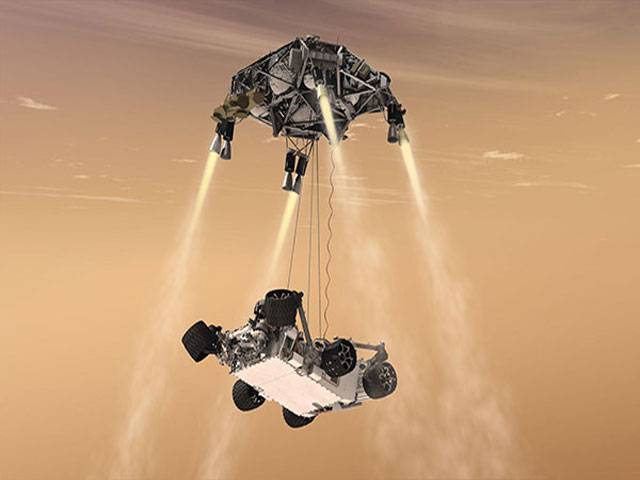BBC
Washington
Nasa’s next Martian rover will attempt to make oxygen on the surface of the red planet when it lands there in 2021.
The rover will carry seven scientific projects, aimed at paving the way for future manned missions, seeking evidence of life and storing samples to be brought back in the future. Among them is a device for turning the CO2 that dominates the thin Martian air into oxygen.
This could support human life or make rocket fuel for return missions. The rover will also carry two cameras and an experimental weather station among its 88lb (40kg) of instruments. “This is a really exciting day for us,” said astronaut and Nasa administrator John Grunsfeld, announcing the Mars 2020 scientific payload in Washington DC.
The one-tonne, $1.9bn (£1.12bn) vehicle will be closely modelled on Curiosity, the rover that touched down on the red planet in August 2012. Its suite of instruments is downsized compared to Curiosity, which is carrying 165lb (75kg) of scientific kit. Some of that space will be used to package up cylindrical rock samples drilled from the planet’s surface.
Nasa hopes these can be shipped home by future return flights. Being able to produce oxygen could help with that ambition, since transporting fuel is heavy and expensive. Other Nasa spacecraft can already produce oxygen from CO2 but the new “MOXIE” device will test this capability in the Martian atmosphere, for the first time.
An oxygen supply would also be essential if people were to land on the planet. This change in focus was described as a “shift in gears” by Prof Tom Pike from Imperial College, London, the co-investigator of the “MOXIE” instrument. “It is very much about the old Star Trek ‘boldly going’, the real focus of this payload is exploration rather than science,” he told BBC News.
There are not very many places that humans can go after the Moon. I would say it’s practically a list of one and Mars is it. Also on board the 2020 rover will be a ground-penetrating radar for analysing the planet’s geology, two arm-mounted gadgets for analysing the chemistry and structure of soil and rocks, and two cameras.
In another first, the cameras are designed so that in a particular configuration they will be able to record 3D movies. “You’re going to feel like you’re on Mars,” said Bill Gerstenmaier, associate administrator of the human exploration directorate at Nasa.
The announcement comes in the same week that Nasa’s earlier Mars rover, Opportunity, clocked up a record-breaking total of 20 miles (40km) of extra-terrestrial driving since its landing in 2004.
Thursday, April 18, 2024
Nasa rover to make oxygen on Mars

Caption: Nasa rover to make oxygen on Mars
Stefanos Tsitsipas advances in Barcelona
4:19 PM | April 18, 2024
Met Office predicts more rains across country till April 29
2:51 PM | April 18, 2024
Punjab changes school timings for summer season
1:55 PM | April 18, 2024
Enemies of Pakistan are unable to digest investment in the country: Ataullah Tarar
1:29 PM | April 18, 2024
IHC restores Bushra Bibi's appeal for shifting to Adiala Jail from Bani Gala
1:24 PM | April 18, 2024
Hepatitis Challenge
April 18, 2024
IMF Predictions
April 18, 2024
Wheat War
April 18, 2024
Rail Revival
April 17, 2024
Addressing Climate Change
April 17, 2024
Justice denied
April 18, 2024
AI dilemmas unveiled
April 18, 2024
Tax tangle
April 18, 2024
Workforce inequality
April 17, 2024
New partnerships
April 17, 2024
ePaper - Nawaiwaqt
Advertisement
Nawaiwaqt Group | Copyright © 2024





